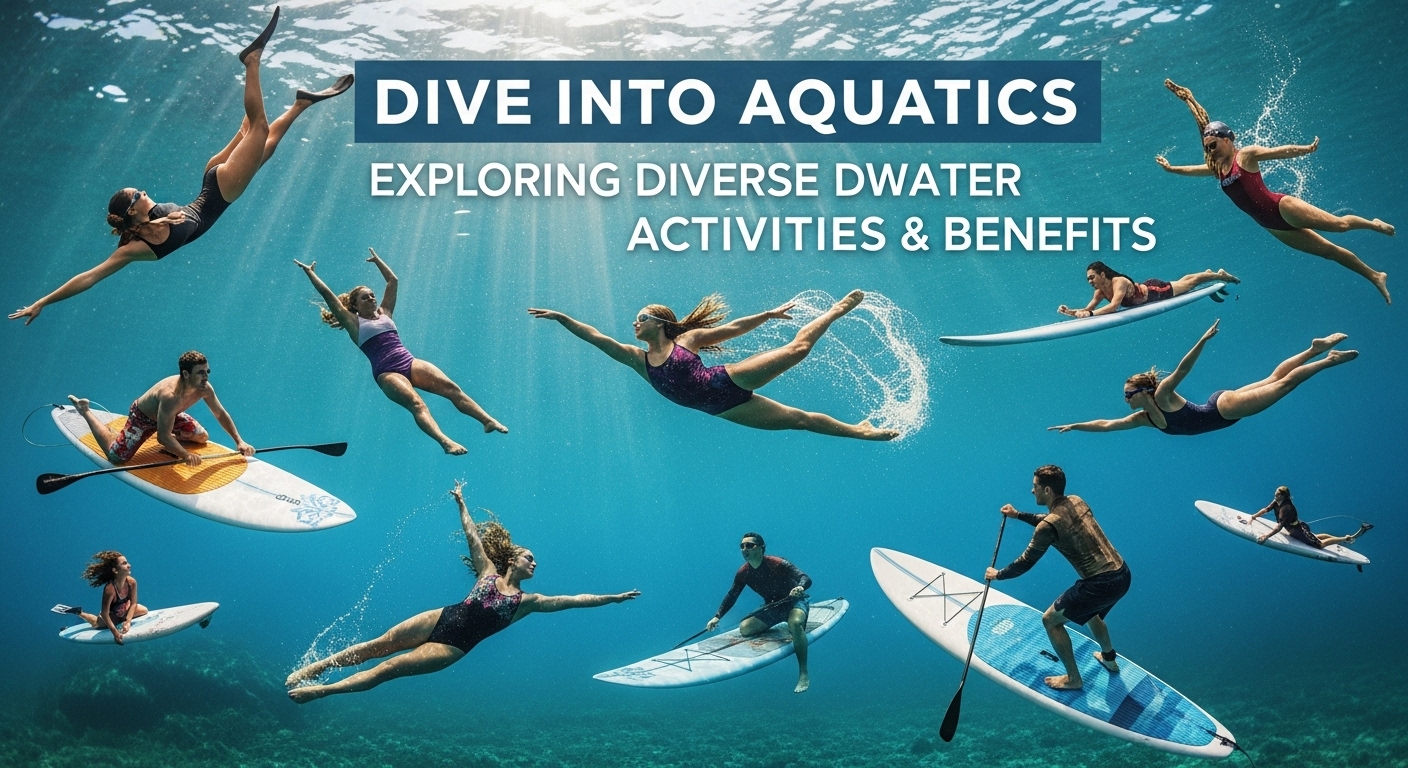When it comes to aquatics, there’s just something about the water that draws people in. Maybe it’s the soothing sound of waves or the joy of splashing around. Whatever it is, it’s undeniable that aquatics encompasses a broad range of activities and interests. From swimming and water polo to synchronized swimming and diving, aquatics isn’t just a hobby—it’s a way of life for many people.
Understanding the Different Types of Aquatic Activities
Let’s break it down. Aquatics, broadly speaking, includes a variety of water-based activities. And they’re as diverse as they are invigorating. Take swimming, for instance. It’s not just a sport, it’s also one of the most popular forms of exercise worldwide. Then there’s water polo, a fast-paced team game played in a pool. Not for the faint-hearted, it demands strength and endurance.
The Art of Synchronized Swimming
Synchronized swimming, now officially called artistic swimming, combines elements of dance and gymnastics with swimming. Performers, who are athletes in every sense, execute challenging routines to music—even underwater. Requires breath control, grace, and strength. It’s like watching a ballet in water. You can check out more about it on Britannica if you’re curious.
Diving: Precision and Courage
Diving is another enthralling aquatic sport. Not just about leaping off a board—there’s a science to it. The perfect dive requires precision, skill, and a bit of courage. Watching a diver twist and turn mid-air, then slicing into the water with barely a splash, is nothing short of mesmerizing. Different types of dives, varying in difficulty, make it a unique sport.
Health Benefits of Aquatics
Water-based activities are beneficial for physical health, no doubt about it. Swimming, in particular, is an excellent full-body workout. It improves cardiovascular health, builds endurance, and strengthens muscles. Plus, it’s easy on the joints. That makes it a go-to exercise for people with arthritis or similar conditions. What’s more, being in water can even enhance mental well-being. The calming effect of water is like therapy for the mind.
Aquatic Fitness for All Ages
Whether you’re a child or a senior, aquatics offers something for everyone. Kids learn swimming as a life skill, while older adults enjoy aqua aerobics for its low-impact nature. Even those who aren’t strong swimmers can benefit from pool exercises. You might find it interesting how aquatics serves as a bonding activity too. Families often spend time together at pools or beaches, enjoying the waves.
Environmental Factors: A Quick Dive Into Aquatic Ecosystems
Aquatics isn’t just about recreation and sports. It’s deeply tied to the environment. Bodies of water support diverse ecosystems. Lakes, rivers, and oceans teem with life—from the tiniest plankton to the largest whales. Understanding aquatics also means understanding these ecosystems. Each plays a crucial role in maintaining ecological balance.
For more detailed insights on aquatics and its environmental significance, you can visit Wikipedia. It’s a dive into the broader concept, touching on both sports and natural aquatic systems.
Challenges in the World of Aquatics
Being passionate about aquatics doesn’t mean it’s without its hurdles. Safety is a major concern. Drowning risks are real, so knowing how to swim is vital. Then there’s water quality. Polluted waters can pose health risks and affect aquatic life. Efforts to protect waters from pollution are ongoing but crucial. And let’s not forget the challenge of accessibility. Not everyone has access to pools or safe swimming areas.
Competitive Aquatics: The Drive to Excel
Competitive aquatics, like any sport, requires dedication. Athletes train rigorously to enhance their skills, endurance, and speed. Competitions, ranging from local swim meets to the Olympics, test these abilities. It’s a world where pushing limits is the norm. But, for many, the joy of competing outweighs the grind of training.
The Role of Technology in Aquatics
Technology plays its part too. Performance tracking devices, advanced swimwear, and even virtual coaching—technology is transforming how athletes train and compete. It’s fascinating how even something as timeless as swimming can be modernized.
Exploring Aquatic Centres
Aquatic centers are hubs for water activities. They offer facilities for swimming, diving, and fitness classes. These centers are not just for serious athletes. They’re community spaces where people gather, exercise, and have fun. They serve as a reminder of how integral water activities are to our lifestyles.
If you’re into other engaging activities, you might want to check out individual options available at Snack Vibe. They offer a wide range of choices, perfect if you’re seeking something new.
FAQs About Aquatics
- What’s the best way to overcome my fear of water?
Start with shallow water activities. Gradual exposure helps build confidence. Consider taking swimming lessons from a certified instructor. - Can aquatics improve mental health?
Absolutely. The soothing effect of water can reduce stress and improve mood. Swimming and water exercises are particularly beneficial. - Is it ever too late to learn swimming?
Not at all. People of any age can learn. Adult swimming classes are available at most community pools. - How can I ensure water safety for my kids?
Supervision is key. Enroll them in swimming lessons and ensure they always swim in safe, lifeguarded areas. - What gear do I need for diving?
A good diving suit and mask are essential. Depending on the dive, fins and a snorkel might be needed too. Always dive with a buddy for safety.
So, that’s the scoop on aquatics. Whether you’re diving into the pool or just floating around, there’s something about water that just feels right. You know? It’s like an invitation to explore, refresh, and enjoy. And it’s always there, waiting for the next adventure.



